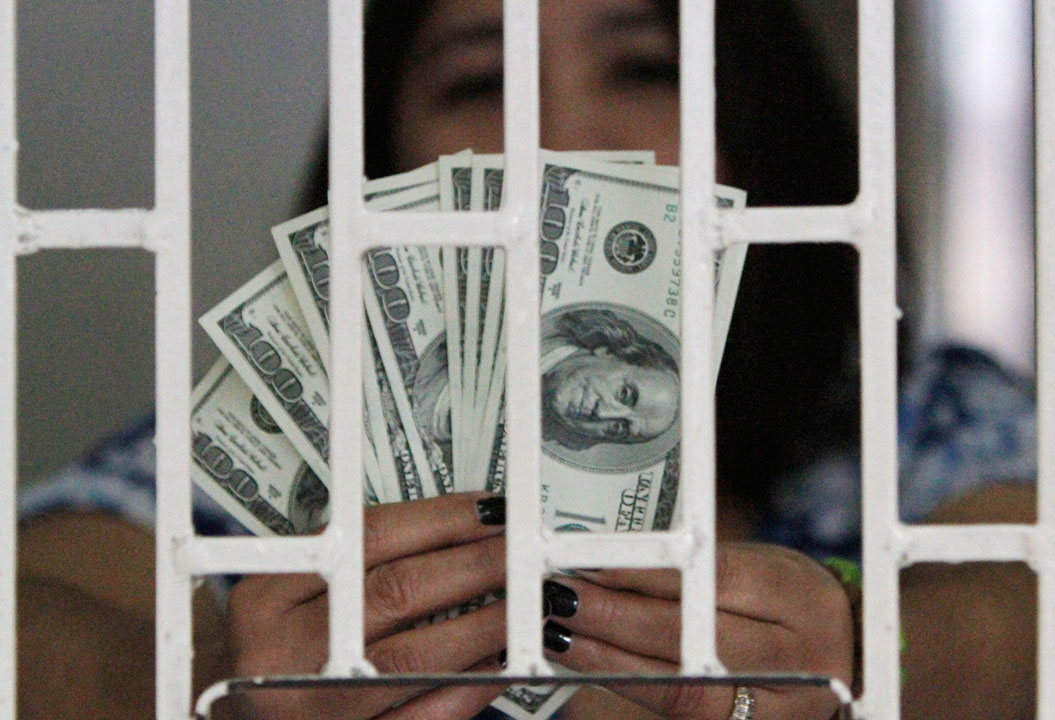Cash remittances hit three-month high

By Luz Wendy T. Noble, Reporter
MONEY SENT HOME by overseas Filipino workers (OFWs) increased anew in October to mark the ninth straight month of annual growth in inflows, as more economies reopen and holiday season approaches.
Cash remittances coursed through banks rose by 2.4% to $2.812 billion year on year in October from $2.747 billion, based on data released by the Bangko Sentral ng Pilipinas (BSP) on Tuesday.
Inflows also jumped by 2.74% from $2.737 billion in September. The October remittances were the highest in three months or since the $2.853 billion in July.
Remittances in the 10-month period reached $25.929 billion, up by 5.3% from the $24.633 billion in the same period of 2020.
The higher cash remittances reflected the increase in money sent by OFWs to their families in the Philippines as Christmas approaches, Asian Institute of Management economist John Paolo R. Rivera said.
“Remittances usually increase in the latter part of the year because of the holiday rush. This is driven by the altruism motive of OFWs in providing for the consumption of their families during the holidays,” Mr. Rivera said in a Viber message.
It also helped that more economies have relaxed their restrictions, Rizal Commercial Banking Corp. Chief Economist Michael L. Ricafort said. In October, most countries reopened as vaccination rates improved and coronavirus disease 2019 cases declined.
“Further recovery of many economies worldwide towards greater normalcy as they move closer to herd immunity fundamentally led to more OFW employment created, thereby also supporting the recent improvement in remittances,” Mr. Ricafort said in a Viber message.
BSP data showed that the biggest remittance sources were the United States, Singapore, Saudi Arabia, Japan, the United Kingdom, the United Arab Emirates, Canada, Taiwan, Qatar, and South Korea, which accounted for 78.9% of total inflows from January to October.
Meanwhile, personal remittances that include inflows in kind inched up by 2.4% year on year to $3.117 billion in October.
For the first 10 months of 2021, personal remittances rose by 5.3% to $28.816 billion from $27.346 billion in the same period of 2020.
Last week, the central bank kept its projections for remittance growth to 4% this year.
With the emergence of the Omicron variant, risks to remittance growth remain despite its improvement in the previous months, Mr. Rivera said.
“Disruptions in mobility will affect deployment and employment, disrupting also remittance inflows and the consumption of remittance-dependent households thereby affecting the Philippine macroeconomy,” Mr. Rivera said.
The Department of Health on Wednesday confirmed that there were already two imported infections with the Omicron variant. Both patients are isolated in a quarantine facility, the agency said in a statement.
Several countries have implemented stricter border controls and travel bans after Omicron was first detected in South Africa last month. The World Health Organization has said that Omicron is a variant of concern for its higher transmissibility.




